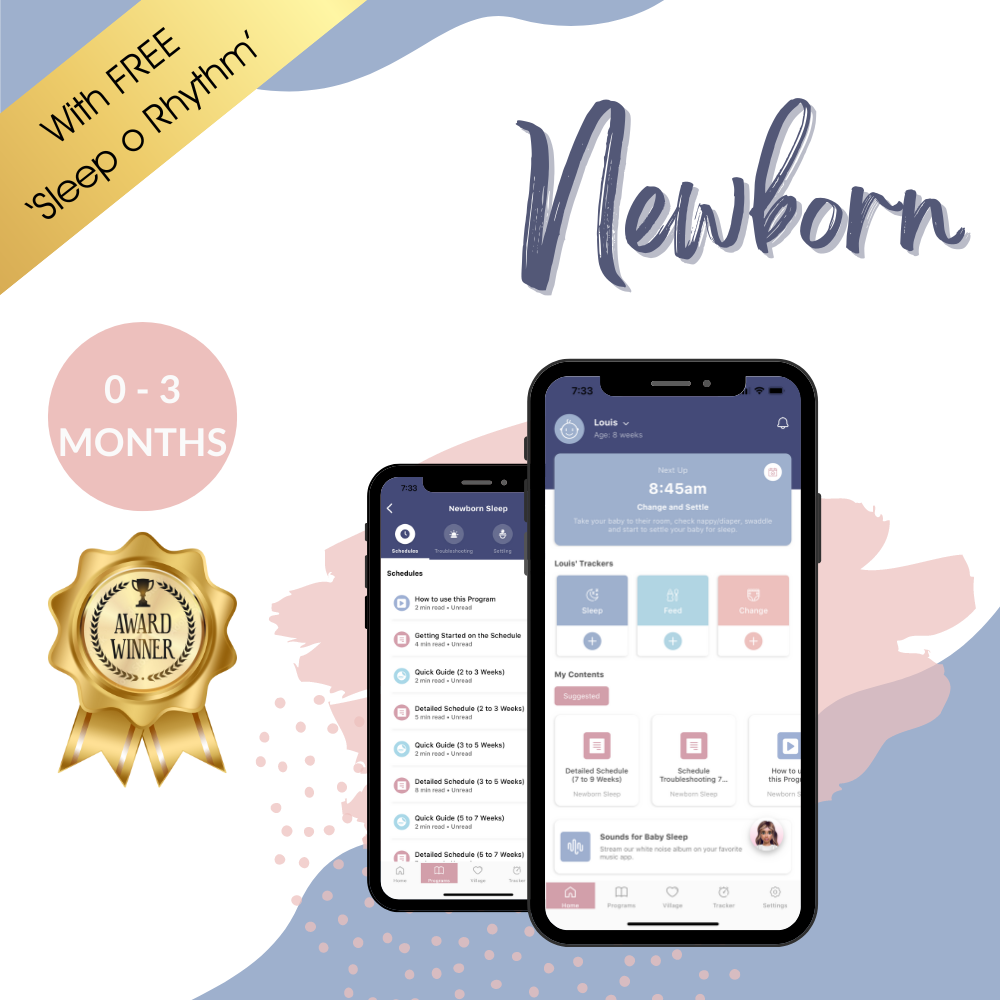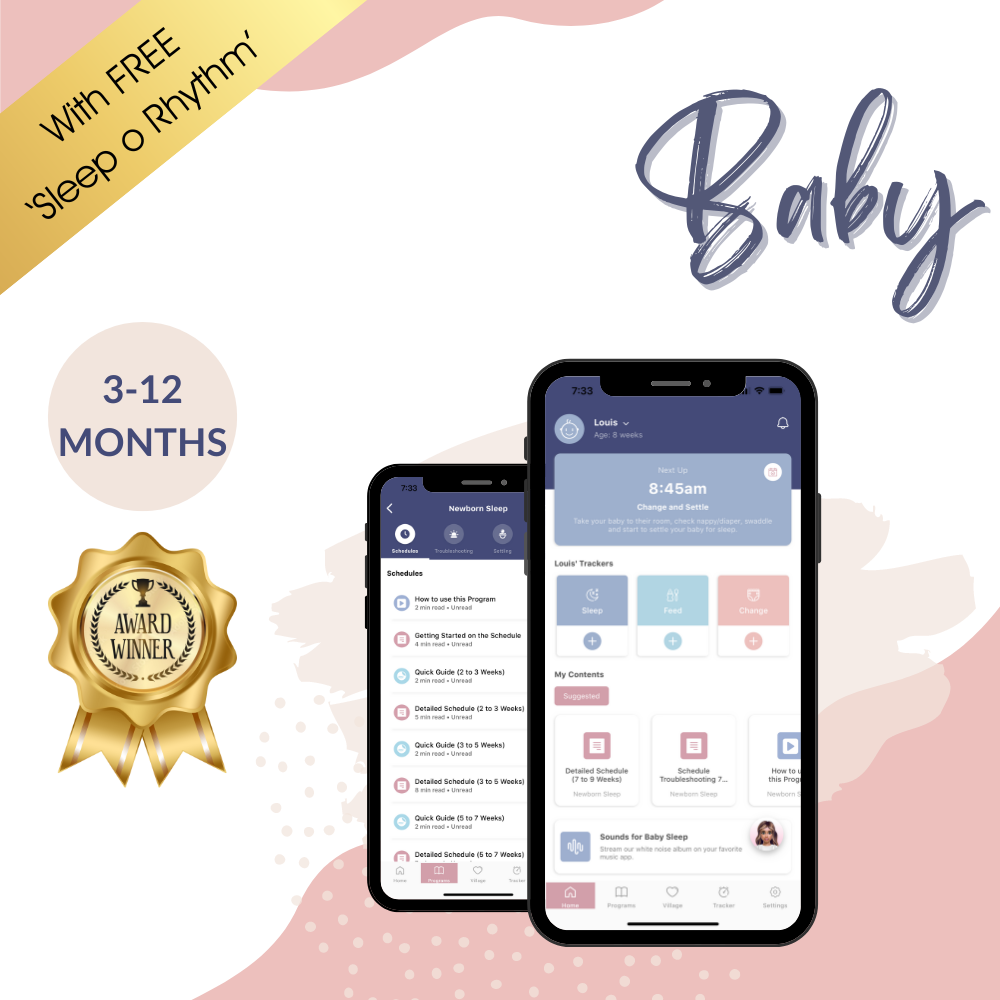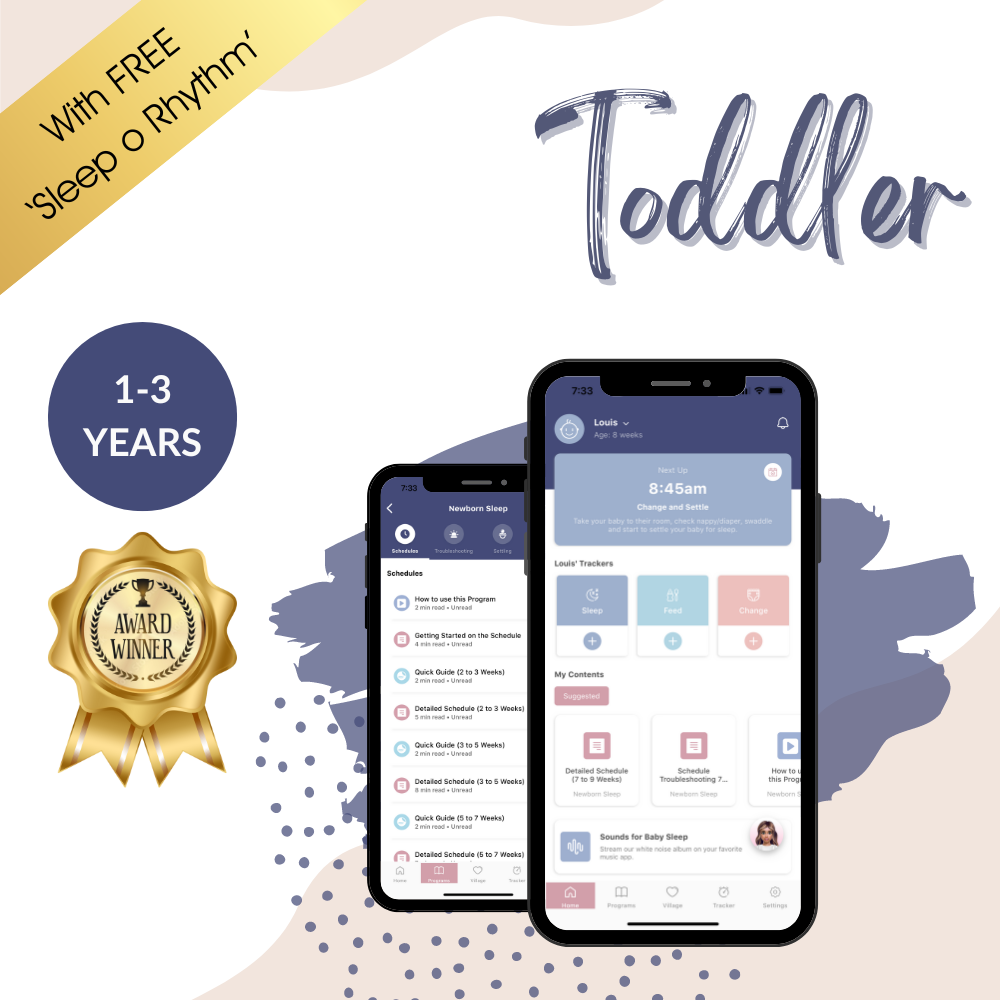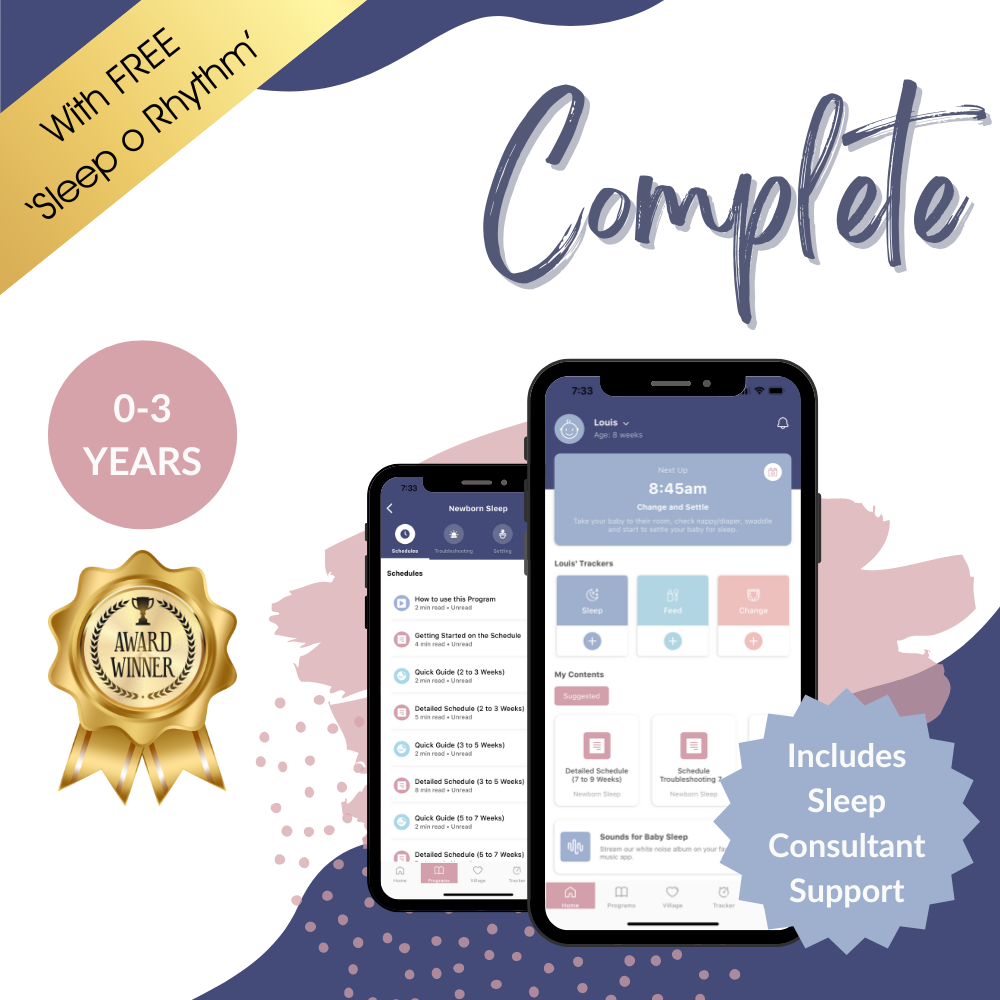
Reverse Cycling: What is it and how to stop it
It’s the middle of the night and you’re up again feeding your little one. You think to yourself…“Why can’t they feed like this during the day, instead of at night?!”.
If your baby is waking frequently throughout the night to feed, this can have a knock on effect with their daytime feeds and lead to what is known as ‘reverse cycling’. Reverse cycling can be frustrating and exhausting but don’t worry, we can help you to switch things around!
In this article, we’ll provide some tips for addressing reverse cycling and ensuring your baby is feeding well during the day, which will help both you and your baby to get more sleep overnight.
In this article:
- What is reverse cycling?
- What causes reverse cycling?
- How long does reverse cycling last?
- How to stop reverse cycling
Stuck with a sleep association? Head towards better sleep!
Found yourself struggling with a sleep association and don't know how to move your baby away from it? Whatever your sleep challenge is, we have a range of gentle settling methods to choose from, along with sleep experts who are available to guide you at every step.
Get our Sleep Programs
What is reverse cycling?
I know, I know, reverse cycling sounds like you’re pedaling backwards on a bicycle! Rest assured though, reverse cycling doesn’t have anything to do with you being on a bike.
Reverse cycling is the term for when a baby is wanting to feed frequently overnight, therefore meeting most of their calorie needs during nighttime hours, rather than during the day. As the name suggests, this can quickly become a ‘cycle’.
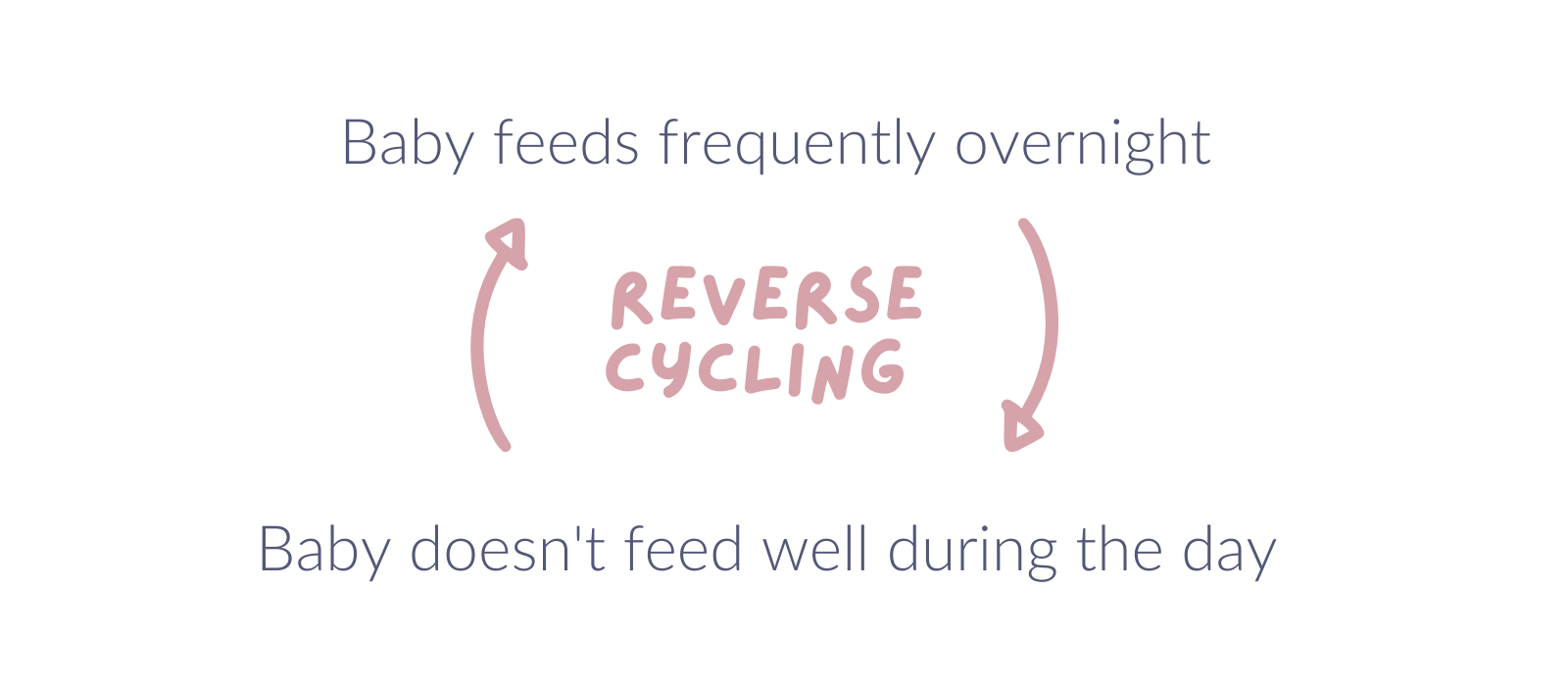
If your baby is waking every 2 hours overnight and you’re feeding them back to sleep each time, this can mean they aren’t hungry the next day and don’t feed well as a result. Poor day feeds will then mean they are genuinely hungry overnight, so again, they will want to feed a lot. This means they aren’t hungry again the next day and so the cycle continues.
Young babies, especially those under 6 months, will need overnight feeds, so just because your child is feeding overnight, this doesn’t necessarily mean they are reverse cycling.
You will know if your baby is reverse cycling if they go for long stretches during the day without feeding or will only take small feeds during the day. Then at night they will wake frequently and can only be settled with feeding, often taking full feeds each time they wake.
Clearly, this isn’t ideal. You and your baby want to be getting the most sleep possible overnight and if you are being woken frequently to feed your baby then this broken sleep is likely to take its toll on you and your baby, as neither of you will be getting long stretches of restorative overnight sleep.
Babies do need a certain amount of milk over the 24 hour period, this is known as their daily milk intake and this will be affected by different factors such as your baby’s age, weight, whether they’ve started solids etc. Ideally, you want your baby to get most of their daily milk intake during the day, as this means less overnight wakes for everyone.
Say goodbye to sleepless nights.
Join over 800,000 families worldwide who are enjoying excellent sleep with our Sleep Programs, created by experts in the field of pediatric sleep.
Get our Sleep Programs
What causes reverse cycling?
Babies reverse cycle for many reasons. Let’s take a look at some of them now…
Self-settling
Reverse cycling can begin if your baby isn’t able to self-settle at the start of naps or bedtime. If they are used to being fed to sleep, whether breast or bottle feeding, then around the age of 4 months, they will likely start waking after each sleep cycle overnight, roughly every 2 hours, expecting to be fed back to sleep each time.
Babies who are feeding 2 hourly, all night long, are likely getting most of their daily milk intake overnight, meaning they just aren’t going to feel as hungry during the day.
Awake times & Nap lengths
If your baby is having very short awake times, it’s possible they just aren’t staying awake long enough during the day to get regular feeds in and meet their calorie needs. You might consider yourself lucky if your little one is having long naps in the day, but if they are sleeping too much, they may not be feeding as frequently as they need to. So instead, your baby will wake more frequently overnight to get the extra milk and awake time that they need.
The amount of awake time that babies can handle changes rapidly in the first 6 months so it’s worth considering if your baby is needing some extra awake time in the day to get those feeds in. Or, you might need to consider waking your baby from naps in order to meet their daily milk needs and help them to sleep for longer overnight.
Our Little Ones App takes the guesswork out of your baby’s sleep by providing the optimal, age-appropriate awake times and nap lengths for your baby.
Comfort
Be it sickness, teething or separation anxiety, sometimes babies just need to be comforted more than usual and nothing is more comforting to them than feeding. It allows them one-to-one time with you where you’re nice and close. If you’re breastfeeding, your baby will be enjoying skin to skin contact and if you’re bottle feeding they will love looking up at your face.
Perhaps you’ve been through a rocky time and your little one started to wake more at night wanting comfort, which led to you feeding them more at night to get them back to sleep. This can then impact their daytime feeds and now you may have found yourself in a reverse cycling pattern.
Growth spurt
Babies go through periods of intense growth and during that time their daily milk intake can increase, this is known as a growth spurt. During this time, their bodies need more energy to facilitate all the growing and learning they are doing, so therefore they will need more milk.
During a growth spurt you may find your baby wants to nurse for longer periods of time, feed more frequently or drink more ounces of milk if they’re bottle fed. Follow your baby’s lead with this.
However, if this frequent feeding continues for more than a week and you’ve noticed they’re now only interested in taking full feeds at night, rather than during the day, then they may have slipped into a reverse cycling pattern.
Change in routine
Life isn’t always plain sailing and changes in our routine can bring about reverse cycling too. Perhaps your baby’s main caregiver has gone back to work, your baby has started at daycare or you’ve moved your little one into their own room to fall asleep independently. Whatever the reason, a change in the norm can impact your baby’s feeding routine and suddenly you find yourself stuck in that cycle of more overnight feeds and less daytime feeds.
Keep in mind that often it is a combination of different factors that have led to reverse cycling rather than just one reason alone.
How long does reverse cycling last?
Unfortunately, reverse cycling isn’t usually something that your baby will grow out of as it is a repeated pattern of behavior. As the name suggests, it is a cycle that will continue. Remember, reverse cycling means your baby is wanting to feed frequently overnight and as a result, their daytime feeds will be small, short or infrequent in comparison.
The good news is that you are able to break this cycle, gradually altering your baby’s feeding pattern so that they start to feed more during the day than at night. Let’s take a closer look at how to do this…
How to stop reverse cycling
Ideally you want your baby to be taking frequent, full feeds during the day to ensure they are meeting most of their daily milk needs, which will result in less overnight wakes. So, now for the big question. HOW do we do this?
Let's get your little one's sleep sorted ASAP!Our award-winning Sleep Programs will solve your baby's sleep challenges in no time.
Get our Sleep Programs
The first thing to do is to consider why is your baby reverse cycling? We’ve explored several reasons that can bring about reverse cycling, but often it will be a combination of factors.
This reason, or root cause of the reverse cycling, is so important as it will affect how you go about breaking the cycle.
If your little one is over 4 months old and fed to sleep, teaching them how to self settle will be key to stopping reverse cycling. If the only way they know how to get to sleep is by feeding, they are going to expect that each time they wake between sleep cycles overnight. In our Little Ones App you’ll find several, gentle methods to guide your baby towards self-settling, so that they will no longer rely on being fed to sleep when they wake overnight.
If your baby is reverse cycling, they will be genuinely hungry overnight so breaking this cycle is not as simple as just stopping the overnight feeds. It is going to be a gradual process to switch things around:
- Start by offering them a full feed on their first overnight wake and feed until refusal.
- At the next wake, offer a reduced feed (see below).
- Continue to alternate between full feeds and reduced feeds overnight.
- You should start to see their daytime feeds go up and this may be all that’s needed to reduce your little one’s overnight wakes.
- Once your little one gets down to a short 1-2 min breastfeed or 1-2oz bottle at the reduced feed windows, try resettling without a feed at those wakes. Feed to soothe them if needed, just until they are calm, and then either give them a chance to self-settle to sleep or use another settling method like patting or rocking.
Offering a reduced feed overnight
- If you are bottle feeding, gradually reduce the amount you’re offering in the bottle by 1oz every other night.
- If you are breastfeeding, reduce the time on the breast. For example, if they normally feed for 10 minutes, you would reduce this by 1-2 minutes every other night.
Take your time with changing this cycle. Your aim is to slowly shift the cycle rather than break it in one night! This helps to make sure your little one is still getting the milk they need, while you work on getting the balance right between their daytime and overnight feeds.
Conclusion
As we’ve seen, reverse cycling can happen for a number of different reasons and it is more than just a baby just waking to feed overnight. A baby who is reverse cycling is taking the majority of their daily milk intake overnight, meaning that their day time feeds will be negatively impacted.
Reflecting on the reasons your baby is reverse cycling can help you determine the best way to support your little one. The aim is to gently guide them away from feeding frequently overnight, to ensure that they are taking good, full feeds during the day. This will mean more sleep for everyone!
If you’d like further support with your child’s feeding and sleep, you will find everything you need in the Little Ones App. Access to the Little Ones Village is also available, where our certified sleep consultants can help you to move away from reverse cycling if your little one has fallen into that pattern.
Bibliography
Infant Sleep - Health Encyclopedia - University of Rochester Medical Center. (2022). Rochester.edu. https://www.urmc.rochester.edu/encyclopedia/content.aspx?contenttypeid=90&contentid=P02237
Newborn Sleep Patterns - Health Encyclopedia - University of Rochester Medical Center. (2022). Rochester.edu. https://www.urmc.rochester.edu/encyclopedia/content.aspx?contenttypeid=90&contentid=P02632
The A to Zzzz’s of Healthy Sleep Habits for You and Your Baby - Health Encyclopedia - University of Rochester Medical Center. (2022). Rochester.edu. https://www.urmc.rochester.edu/encyclopedia/content.aspx?contenttypeid=197&contentid=30437
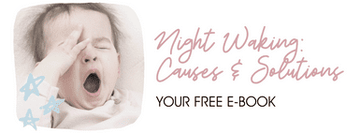
Receive product and services updates, promotional offers and other marketing communications based.


